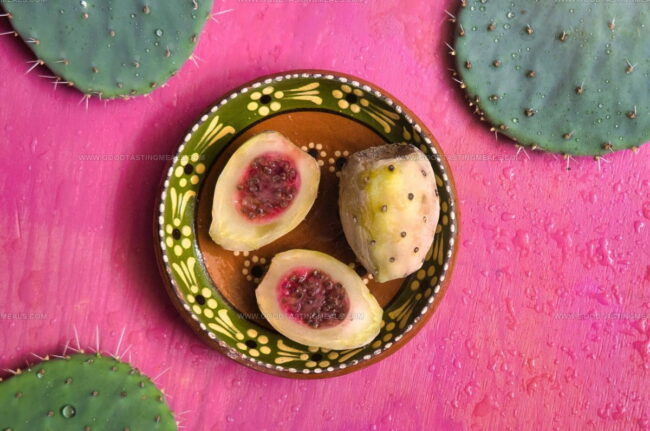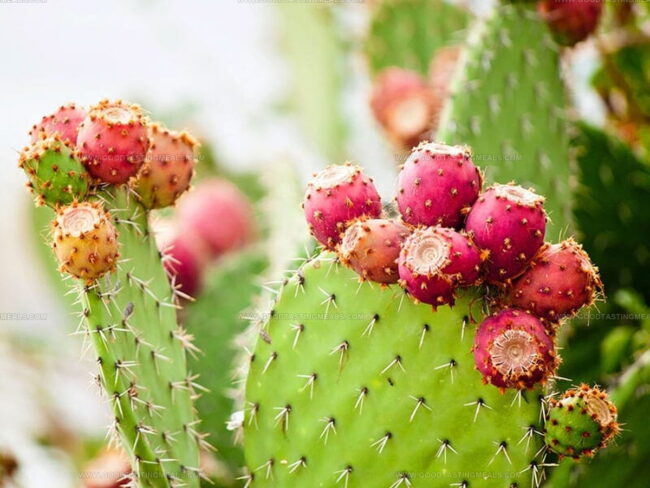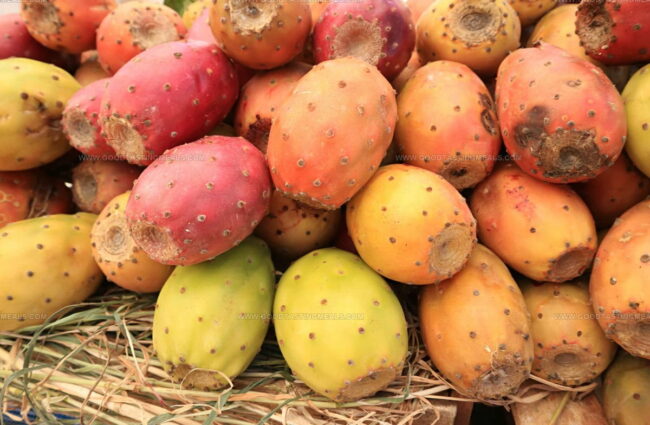Prickly Pear Taste: Nature’s Sweet Desert Surprise Awaits
Prickly pear, a vibrant desert fruit, often sparks curiosity among food enthusiasts and health-conscious individuals.
This unique cactus-derived delicacy carries a fascinating backstory that goes beyond its spiky exterior.
Adventurous eaters frequently wonder about its flavor profile and culinary potential.
Native to Mexico and southwestern United States, the fruit has captured the attention of chefs and nutritionists worldwide.
Its stunning magenta or yellow color makes it visually appealing and intriguing to those unfamiliar with its characteristics.
Some compare its taste to a familiar fruit, while others describe it as entirely distinct and surprising.
The journey of understanding prickly pear's flavor nuances promises to be a delightful culinary exploration that will tantalize your taste buds and expand your gastronomic horizons.
What Is Prickly Pear?
Prickly pear is a bright, sweet fruit that grows on the pads of cactus plants, especially in places like Arizona and Mexico.
It’s known for its bold color, juicy inside, and unique oval shape.
Mexican culture has used prickly pears for thousands of years, making everything from drinks and candies to sauces and jellies with their sweet, refreshing flavor.
Before eating, you need to be careful, raw prickly pears have tiny, sharp spines called glochids that can stick in your skin, so people wear thick gloves or burn off the barbs before handling.
Most prickly pears you buy in stores are already cleaned, making them safe and easy to slice up for recipes or snacks.
This tasty fruit adds a pop of color and a special touch to salads, desserts, drinks, and more.
Flavor of Prickly Pear
Prickly pear often gets confused with pineapple, but it's actually a berry that tastes more like raspberry or strawberry.
Its flesh contains seeds and offers a meaty texture.
Some describe its flavor as a mix between classic bubble gum and watermelon.
Flavor changes as the fruit matures, with early fruits holding a more concentrated taste that intensifies as they grow larger and longer.
Known as Tuna in some regions, prickly pears come packed with nutritional advantages.
Similar to dragon fruit, prickly pears contain high levels of antioxidants, vitamins, minerals, and fiber that support overall health.
Betalain in the pulp helps combat cancer, aging, and body inflammation.
Its vitamin content makes it an excellent dietary choice, with a flavor that surpasses most standard berries.
Prickly pear serves as a tart addition to many dishes, bringing significant health benefits.
Each fruit contains substantial dietary fiber, antioxidants, and minerals.
Prickly pear extracts are useful in various treatments, particularly for managing type 2 diabetes and high cholesterol through its anti-inflammatory properties.
Prickly Pear Varieties: Taste Differences
Prickly pear comes in many types, and each one has its own unique taste and color.
Some prickly pears are bright red or purple and taste sweet, almost like watermelon or berries, with a juicy bite.
Other varieties can be green, yellow, or orange and might taste more mild, a little tangy, or even a bit citrusy.
The texture also changes, some are soft and smooth, while others have more seeds or a firmer flesh.
No matter the type, each variety brings its own flavor twist, so you can find one that fits your taste, whether you like something extra sweet or prefer a refreshing, slightly tart snack.
Ways to Cook and Use Prickly Pear
Handling prickly pears requires more careful steps compared to other berries. Removing thorns becomes essential before using the fruit in any recipe.
Thick leather gloves, sharp knives, or pliers work best for safely preparing these spiky fruits.
Scrubbing helps clean the fruit effectively.
Prickly pears work wonderfully in many different recipes and drinks:
Is Prickly Pear a Sweet Fruit?
Ripe prickly pears offer a wonderfully sweet taste that stands out from other fruits.
Seeds fill their juicy interior, creating a distinct eating experience.
Grape lovers who dislike seeds might find this fruit challenging.
Fortunately, these seeds slide down easily and won't cause any problems when you eat them.
Their soft texture and unique flavor make prickly pears a delightful snack for those willing to try something different.
How to Eat Prickly Pear
Prickly pear may look intimidating, but enjoying this fruit is simple with the right approach.
Learn how to safely prepare and savor every bite of prickly pear.
How to Spot and Pick Cactus Fruit
Cactus fruit, also known as prickly pear, grows along the edges of flat cactus pads.
The fruit is shaped like a pear and changes color as it ripens, green means less sweet, while deep red or crimson is the sweetest.
Orange-colored fruits are in between.
The little dots on the fruit are called glochids, which are tiny, sharp hairs that can stick in your skin and hurt.
Always protect your hands with thick gloves, an old towel, or several layers of paper towels when picking.
Grip the fruit and gently twist it off.
Riper fruit pops off easily, while greener fruit may need a bit more twisting.
Drop the picked fruit into a bowl or basket, and avoid touching it with bare hands.
Getting the Fruit Ready
Before handling, make sure to get rid of the glochids.
If you bought the fruit at the store, they’re usually already gone.
If not, hold the fruit with tongs or a fork and pass it over an open flame, turning slowly.
You might see sparks or hear pops as the glochids burn away.
Keep going until all the little dots look black, don’t forget the top and bottom!
Cut the Fruit, Peel the Skin, Eat Prickly Pear
Does Prickly Pear Taste Like Dragon Fruit?
Dragon fruit and prickly pear share bumpy outer layers, but their surface details differ.
Dragon fruit carries green, scale-like bracteoles while prickly pear has tiny spiny hair-like glochids.
Chefs typically remove dragon fruit's bracteoles before serving, but prickly pear's glochids remain part of the fruit's natural texture.
Why Is Prickly Pear Also Called Tuna?
Spiky stems give the prickly pear its unique name.
Sharp points covering the plant's surface act like protective armor.
These spines start as small leaf structures and become harder and more sturdy over time.
Nicknamed pears or tunas, these desert plants defend themselves with their pointy exterior.
Tough spines help the plant survive in harsh environments by deterring animals and protecting its core from damage.




